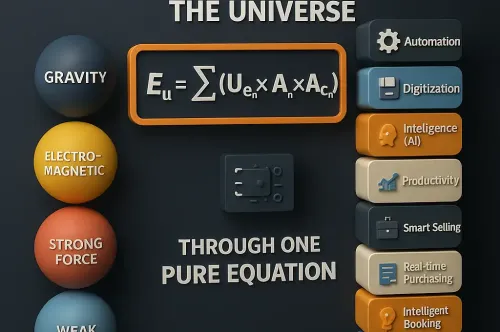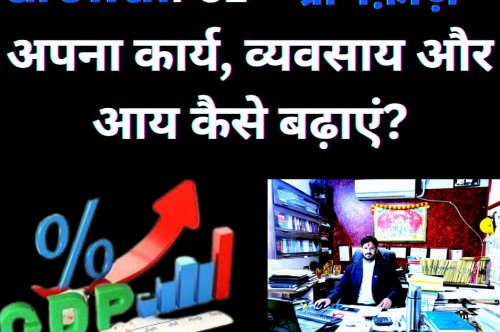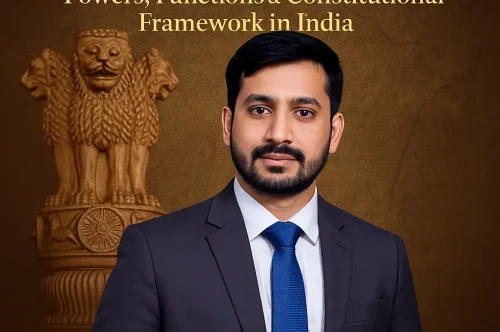Activation vs Automation: The Future Beyond Efficiency

Activation vs. Automation: The Next Leap for Civilization
Introduction
For more than a century, automation has been the engine of progress. Machines, algorithms, and systems have streamlined our factories, optimized our services, and expanded business efficiency. Automation was the backbone of the industrial revolution — making processes faster, cheaper, and more reliable.
But today, we face a deeper question: Is automation enough to carry civilization forward?
Prakash Chand Sharma — inventor of the Activated Universe & Civilization (AUC) and the world’s first Chief Activator Officer — believes the answer is no. Automation optimizes the present, but it does not unlock the future. The next leap is activation: a paradigm that awakens dormant intelligence, orchestrates universal resources, and transforms not just businesses, but civilizations.
What is Activation?
Activation goes beyond automation’s efficiency. It is the process of awakening dormant potential — human, digital, natural, and even universal — and orchestrating it toward purposeful outcomes.
“Activation is inclusive — it combines human intelligence, artificial intelligence, creativity, and contributional intelligence (CI).”
Unlike automation, which replaces human effort, activation empowers it. It combines human intelligence, artificial intelligence, creativity, and what Prakash Chand Sharma calls Contributional Intelligence (CI) — the unique human capacity to contribute meaningfully beyond tasks.
Activation is:
-
Dynamic → It adapts to context, not just pre-set rules.
-
Inclusive → It brings together diverse intelligences — human, artificial, and collective.
-
Civilizational → It doesn’t just scale businesses, it activates people, societies, and even global resources.
For example, imagine a manufacturing company. Automation deploys robots to assemble products faster and cheaper. Activation, however, reorganizes the entire system: empowering workers to co-create with AI, transforming waste into new value streams, and connecting the factory into a broader ecosystem of suppliers, communities, and even environmental regeneration. The result is not just efficiency — it is transformation.
As Sharma frames it, “Automation makes processes efficient. Activation makes civilizations alive.”
“Automation is the process of programming machines, systems, or algorithms to perform tasks with minimal human intervention (history of automation).”
Automation vs. Activation: Key Differences
Automation and activation are not rivals — they are different stages of progress. Automation optimized the industrial era; activation is designed to power the civilizational era.
Here’s how they diverge:
|
Aspect |
Automation |
Activation |
|
Core Purpose |
Efficiency & cost reduction |
Unlocking potential & creating value |
|
Scope |
Task-specific, narrow |
Universal, cross-domain, civilization-scale |
|
Human Role |
Often replaced or minimized |
Central, empowered, synergized |
|
Technology Role |
Tool for doing work |
Engine for orchestrating intelligences |
|
Outcome |
Productivity |
Transformation |
|
Vision |
Optimized processes |
Activated worlds |
Automation streamlines what exists. Activation unlocks what does not yet exist.
As Prakash Chand Sharma emphasizes, automation is a foundation, but it is not destiny. The destiny of this century lies in building activated systems that unite human creativity, AI, and universal resources into new engines of civilization.
Why Automation is Not Enough
Automation has carried us far, but it is reaching its limits.
-
It optimizes the present, but it does not reimagine the future.
-
It handles tasks, but it does not unlock contributional intelligence — the uniquely human ability to create meaning, value, and progress.
-
It scales businesses, but it does not scale civilizations.
The World Economic Forum’s Future of Work reports show that while automation may displace certain roles, the greatest demand is for human skills — creativity, problem-solving, empathy, and systems thinking. These cannot be automated. They must be activated.
As societies face rising complexity in the economy, environment, and governance, automation alone cannot align resources, intelligences, and collective action. Complex problems require activated systems — systems that adapt, synergize, and evolve with context.
Prakash Chand Sharma frames it simply:
“Automation reduces friction. Activation creates flow.”
“As complexity rises in society and economy (Future of Work – WEF Report), we need more than automation.”
The Era of Activation
Activation is not just a concept — it is a civilizational framework. It begins with people and scales up to entire civilizations.
1. Activating People
Activation empowers individuals to bring forward their unique intelligences — creativity, empathy, strategy, and contribution.
-
Example: In education, instead of students passively absorbing knowledge (automation of learning), activation turns them into co-creators — designing projects with AI tutors, collaborating globally, and shaping solutions for real-world challenges.
2. Activating Businesses
Activation reveals hidden value in organizations by orchestrating human and artificial intelligence together.
-
Example: A company that automates its processes gains efficiency. A company that activates its workforce, supply chain, and customers gains innovation, resilience, and new markets.
3. Activating Resources
Activation transforms underutilized assets into engines of shared prosperity.
-
Example: Smart cities can activate unused land, renewable energy, and digital networks to reduce waste, generate new industries, and uplift communities.
4. Activating Civilizations
At the highest scale, activation builds infrastructure for collective progress.
-
Example: When governments, industries, and societies operate as an activated ecosystem, they align resources, knowledge, and technologies toward shared goals such as sustainability, health, and prosperity.
As Prakash Chand Sharma — architect of the Activated Universe & Civilization (AUC) — puts it:
“Automation builds tools. Activation builds worlds.”
Zumosun’s vision — Activate Everything by AUC (Activated Universe & Civilization) — represents this shift. We are not here to automate isolated tasks; we are here to activate our world together.
Conclusion: From Automation to Activation
Automation was the industrial revolution of the 20th century. It gave us scale, speed, and efficiency. But the challenges of the 21st century — complexity, inequality, environmental strain, and the demand for meaning — require something greater.
That next leap is activation.
Activation does not replace humans with machines; it empowers humans and machines to co-create. It does not just optimize processes; it awakens potential. It does not simply scale industries; it scales civilizations.
As the inventor of the Activated Universe & Civilization (AUC), Prakash Chand Sharma envisions a future where every person, resource, and system can be activated into purpose, synergy, and contribution. Through Zumosun’s frameworks — from Activated Intelligence to Contributional Intelligence (CI) — Sharma is not just building a company, but architecting a new civilizational operating system.
The choice before us is clear:
-
Automation makes processes work.
-
Activation makes the world alive.
-
“Automation optimized processes. Activation will optimize civilization.”
The 20th century belonged to automation. The 21st century belongs to activation.
The world no longer needs systems that only do things for us. The world needs engines that activate us, with us, and through us. That is the future Zumosun is building: an Activated Universe & Civilization.“Learn more about Zumosun’s mission to activate everything.”
“Join the Activated Era — where every resource, every idea, every human is alive with purpose.”
Author
Prakash Chand Sharma – Architect of the Activated Universe Civilization
Eng. Adv. CAO Prakash Chand Sharma is the Inventor, Promoter, Founder, Director General (DG), Chief Activator Officer (CAO), and CEO of Zumosun Universe – The Activated Universe (AU) Civilization). With a rare fusion of engineering precision, legal insight, and entrepreneurial leadership, Prakash leads a bold and visionary mission: to activate everything in the universe — from ideas and resources to people, systems, and entire civilizations.
As the originator of the Activated Universe (AU) Civilization, Prakash has introduced a transformative paradigm that goes beyond artificial intelligence. His work reimagines the world by converting inactivated systems into living, intelligent, and interconnected activated ecosystems. Through Zumosun, he has pioneered revolutionary frameworks like Activated Intelligence (AI), Resources as Growth (RaaG), One-Click Activation, and the World’s First Activated Market.
He has also coined an entirely new vocabulary to define this civilizational shift — terms such as: Activizen, Activement, Tolitics, Activician, Tureaucracy, Aconomy, Universilization, Resourcilization, Activators, Activepreneur, Acosystem, Zuostum Science, and many more — laying the linguistic and conceptual foundation of the activated era.
Prakash has empowered over 1,000 individuals, supported 200+ organizations, delivered in cross-domain solutions for everything , and built a digital-to-activation economic engine where activation replaces fragmentation, misalignment, inaccessibility, delay, and inefficiency.
As the world’s first Chief Activator Officer, Prakash is not just building a company — he is architecting a new civilizational operating system to unlock universal excellence, exponential growth, and collective empowerment.
Follow On:-
1. https://www.linkedin.com/in/eng-adv-cao-prakash-chand-sharma-26586143/
2. https://www.facebook.com/er.adv.ca.prakash.chandsharma.35
“The Contributional Intelligence (CI) and CQ Quotient System (CQ₁, CQ₂, CQ₃) is original work authored by Prakash Chand Sharma and is officially registered under the Copyright Act, 1957. Copyright Certificate No. LD-20250173375, dated 08/09/2025. All rights reserved.”







